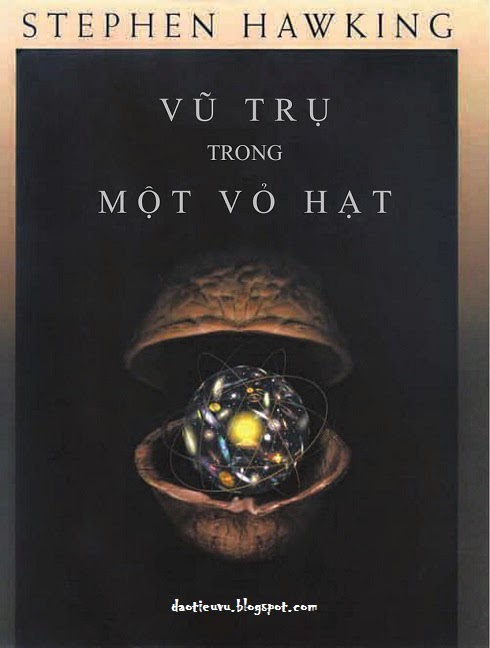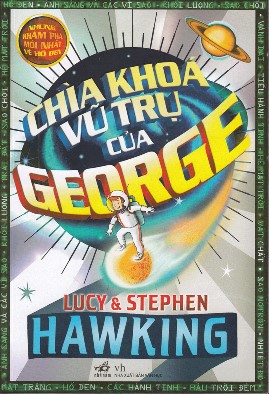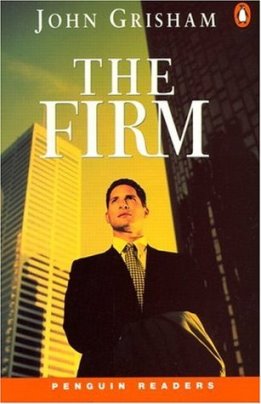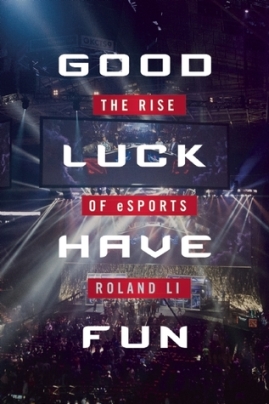Introduction of the ebook: The Grand Design
Đánh giá : 4.05 /5 (sao)
THE FIRST MAJOR WORK IN NEARLY A DECADE BY ONE OF THE WORLD’S GREAT THINKERS—A MARVELOUSLY CONCISE BOOK WITH NEW ANSWERS TO THE ULTIMATE QUESTIONS OF LIFE
When and how did the universe begin? Why are we here? Why is there something rather than nothing? What is the nature of reality? Why are the laws of nature so finely tuned as to allow for the existence of beings like our THE FIRST MAJOR WORK IN NEARLY A DECADE BY ONE OF THE WORLD’S GREAT THINKERS—A MARVELOUSLY CONCISE BOOK WITH NEW ANSWERS TO THE ULTIMATE QUESTIONS OF LIFE
When and how did the universe begin? Why are we here? Why is there something rather than nothing? What is the nature of reality? Why are the laws of nature so finely tuned as to allow for the existence of beings like ourselves? And, finally, is the apparent “grand design” of our universe evidence of a benevolent creator who set things in motion—or does science offer another explanation?
The most fundamental questions about the origins of the universe and of life itself, once the province of philosophy, now occupy the territory where scientists, philosophers, and theologians meet—if only to disagree. In their new book, Stephen Hawking and Leonard Mlodinow present the most recent scientific thinking about the mysteries of the universe, in nontechnical language marked by both brilliance and simplicity.
In The Grand Design they explain that according to quantum theory, the cosmos does not have just a single existence or history, but rather that every possible history of the universe exists simultaneously. When applied to the universe as a whole, this idea calls into question the very notion of cause and effect. But the “top-down” approach to cosmology that Hawking and
Mlodinow describe would say that the fact that the past takes no definite form means that we create history by observing it, rather than that history creates us. The authors further explain that we ourselves are the product of quantum fluctuations in the very early universe, and show how quantum theory predicts the “multiverse”—the idea that ours is just one of many universes that appeared spontaneously out of nothing, each with different laws of nature.
Along the way Hawking and Mlodinow question the conventional concept of reality, posing a “model-dependent” theory of reality as the best we can hope to find. And they conclude with a riveting assessment of M-theory, an explanation of the laws governing us and our universe that is currently the only viable candidate for a complete “theory of everything.” If confirmed, they write, it will be the unified theory that Einstein was looking for, and the ultimate triumph of human reason.
A succinct, startling, and lavishly illustrated guide to discoveries that are altering our understanding and threatening some of our most cherished belief systems, The Grand Design is a book that will inform—and provoke—like no other.’ …more
Review ebook The Grand Design
It’s a funny thing being a cosmologist in the greater Los Angeles area. Back when I was a partying single graduate student, I’d frequently hit the town for some fun. Inevitably I’d meet someone, strike up a conversation, and they might ask me what I did for a living.
“Oh, I’m a cosmologist.”
“Cosmetologist? Cool, do you do make-up for movies?”
“Um…not unless rouge is a component of dark matter.” (ba-da-bum)
“…”
“I make detectors and use them to study the origins and geometry of our universe.”
” It’s a funny thing being a cosmologist in the greater Los Angeles area. Back when I was a partying single graduate student, I’d frequently hit the town for some fun. Inevitably I’d meet someone, strike up a conversation, and they might ask me what I did for a living.
“Oh, I’m a cosmologist.”
“Cosmetologist? Cool, do you do make-up for movies?”
“Um…not unless rouge is a component of dark matter.” (ba-da-bum)
“…”
“I make detectors and use them to study the origins and geometry of our universe.”
“Uh. No way. You ever work in movies?”
I discovered after a few years of this that it was much easier and simpler to tell people I was Mary Poppins at Disneyland. Without exception, folks believed me, made a joke and moved on. The physics thing just cause wrinkled faces, and very odd non-sequiturs. Once I had a guy tell me all about a distant cousin who studied shrimp in the Netherlands. Frequently I’d get the physicist = physician mix-up. Luckily no one ever showed me their rash. Oh well, such is the life of the lonely, misunderstood cosmologist.
Why am I telling you about all my misadventures in life? Oh yeah, to let you know that my background is observational cosmology. (I.e. making devices, detectors, instruments and doing experiments in labs, in Antarctica and on space-born projects.) I’m not a theorist, and most definitely not into string theory/membrane theory/M-theory. That stuff isn’t even touched upon in most graduate programs. It’s esoteric, wicked complicated, and honestly still in a very nascent stage.
So, I’m not qualified to comment on M-theory being THE answer to The Grand Design as Hawking and Mlodinow so insistently propose. The question then becomes did they sell me on the idea. I dunno… maybe? It was all so very glossed over, overwhelmed by all the history and background needed to give the reader an appropriate framework. Then when they finally game to the climax of the story, where all the previous information should coalesce, M-theory barely got much of an explanation or treatment at all.
I got the impression they wanted to push this Grand Idea, a wrap-up of all previous ideas, made with sweeping statements and generalizations to get press. Plus, if it turns out to work and be right, they can point to this very thin book and say “A-ha!” That’s why I removed a star.
Now, if you are looking to learn more about the science of the universe this is just the book for you. They do an excellent job explaining aspects of special relativity, general relativity, particle physics, early-universe physics, even my favorite field, the CMB. (Which maddeningly they call the CMBR, a very outdated term, and refer to the fluctuations as being in the microwave regime, even though they are sub-millimeter radiation! Grrr!) They even throw in a ton of historical context, which helps the reader understand the difficulties of the field and the constantly evolving nature of science.
The science is great, you will learn a ton. Really. The writing is clear in that no-nonsense style Hawking is so famous for. Unfortunately in a few areas the explanations get really muddled to the point of incomprehensibility, and I suspect that might be Mlodinow’s doing, since those muddled spots fall in his particular area of expertise. One would expect a research scientist in the field (even if she’s a lowly experimentalist) should be able to breeze through all their scientific lessons. I found the string theory section to be really tough-going, with pretty poorly thought out examples. But it is a very esoteric field, and maybe there just aren’t easy ways to help lay-folks visualize the 11-dimensional space and the vibrating membranes?
Speaking of clear teaching examples, the book is filled with ways to help the reader visualize some very hard concepts. Gravity affects space-time like having a rubber sheet for your pool table, then pulling down on one spot right in the middle. The balls will curve around the area in much the same way that objects do near-ish black holes. The “strings” in string theory are described to be like a straw, with a surface space, but curled up on itself. However, from very far away a straw looks like a 2-dimensional line.
And yet a few of their examples obviously fall short, which I suppose all stand-ins for the real thing will eventually do. The one that really stood out like a a sore thumb was the balloon-as-expanding-universe. Their illustration looks like someone could take a marker and draw little galaxies on a balloon. Then as the balloon is filled with more air and expands, all galaxies will move away from each other independently. The first trouble is that the galaxies, if drawn on, would expand themselves, which doesn’t actually happen. (The mass and hence gravity of galaxies is a stronger force than the expansion of the universe.) In the text, it’s made clear that the galaxies have to be treated as points on the balloon, but the graphic is a bit misleading. Secondly, the obvious question to the balloon is: Okay, the balloon expands into our 3-dimensional space, so what is the universe expanding into? They certainly touch on the answer later, but never refer back to our balloon. What a shame.
At any rate, here’s my advice: Believe their grand M-theory answer or don’t, I don’t think it matters as long as you have learned a few things about our scientific understanding of the universe along the way.
Since I made fun of “The Industry” suitors I encountered around Los Angeles, I should relate a tale of the foolish physicists. Create a supersymmetry of courtship mishaps or something. I was at a party on campus, which was completely populated by science grad students, and maybe a few random stray people. I met a guy, he seemed nice enough, so we chatted about motorcycles for a while. He asked me what I studied, so I very jokingly told him I was a Theoretical Cosmetologist, and a student at the neighboring university (which has many, many more women). Ridiculous, right? The guy fell for it hook, line and sinker, and wanted to know more details of this theoretical cosmetology. So I told him all about color theory, combining it with an understanding of personality traits, and the effect of shadowing on first-impressions. Meanwhile, my co-workers stood behind him, trying to hold in their laughter. It was mean, but he believed me!
If you ever meet me in person, only believe about 63% of what I say. The rest is a joke. And that’s a scientifically proven fact. …more


 Đang tải dữ liệu
Đang tải dữ liệu























Chia sẻ ý kiến của bạn